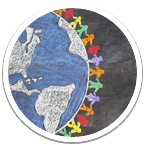The health and welfare of Roma
The Roma population’s socio-economic situation places them in many ways on an unequal standing in Finnish society.
Compared to the general population, the Roma population has
- a lower level of education
- a higher level of poverty
- more unemployment
- poorer self-rated health.
Low socio-economic status increases morbidity and mortality and impairs a person’s functional capacity. Exclusion from society and poor living conditions weaken health and expose people to unhealthy lifestyles.
Inclusion and equality in society are promoted, for example, through education, employment and good living conditions.
Education promotes the functional capacity and work ability of the Roma
Good work ability and functional capacity promote well-being. According to the Roma well-being survey (Roosa)
- the majority have not completed a post-comprehensive school qualification.
- half of the men estimated that they are fully able to work.
- just over a third of women felt fully able to work.
- mobility difficulties among women were common.
- near vision acuity was weakened among women aged 55 and over and among women aged 30–54.
Measures to increase and maintain work ability and functional capacity among the Roma population:
- raising the level of education
- prevention and treatment of women's mobility difficulties
- treatment of impaired vision: measurement of visual acuity and provision of suitable glasses, identification and treatment of diseases that impair vision.
It is important to talk about mental well-being
Issues related to mental well-being are sensitive in the Roma community. Mental well-being plays a key role in an individual's
- comprehensive well-being
- functional capacity
- physical health.
The study found that significant symptoms of depression and anxiety are observed in the Roma population more often than in the general population. The prevalence of symptoms among those taking part in the Roosa study was approximately four times higher than that of the general population, and as much as five times higher for women.
The reasons for mental distress are largely the same as in the rest of the population:
- unemployment
- distressing life experiences
- poor economic situation
- hopelessness
- discrimination and lack of purpose in life.
The Roma make less use of mental well-being services than the general population.
The results of the Roosa study can be used as a starting point for discussion to make it easier to talk about mental well-being and to lower the threshold for choosing to access services.
Physical activity and healthy lifestyles maintain well-being and help with weight management
About half of the men who participated in the Roosa survey said that they engaged in leisure time physical activity. The women, however, did not exercise much: only around a third said they exercise in their free time. The youngest were the most active.
Factors seen as limiting leisure time physical activity include
- lack of money
- tiredness
- feeling low
- laziness
- lack of interest.
- About one third of women feel that Roma clothing restricts leisure exercise.
Minimal leisure time exercise combined with overweight and obesity increase mobility difficulties. Two thirds of the Roma men and women who participated in the Roosa survey were overweight.
Everyone can make lifestyle choices, and even minor changes can bring benefits. Choices are also influenced by living conditions, economic situation, and support from family and the community.
Alcohol consumption among the Roma population is low
Alcohol use among the Roma population is significantly lower than in the general population. Temperance is also more common than among the general population.
According to the Roosa study, high-risk alcohol consumption was most common among 18–29 year-olds.
Smoking is still very common in the Roma population. About 40% of Roma men and women smoke daily. Smoking is most common in the youngest age group, irrespective of gender. In general, smoking has decreased significantly in Finland since the 2000s.




